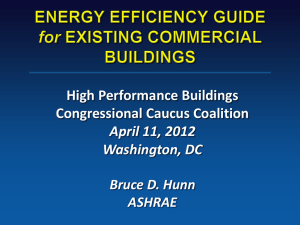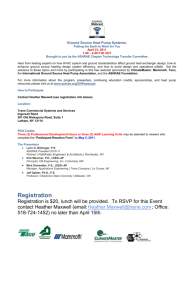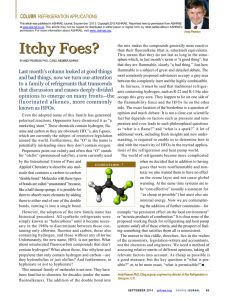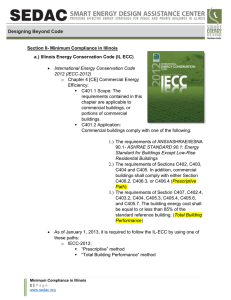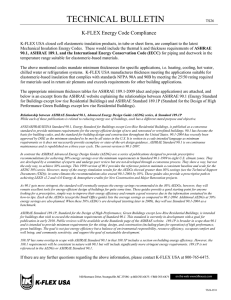ASHRAE press release
advertisement
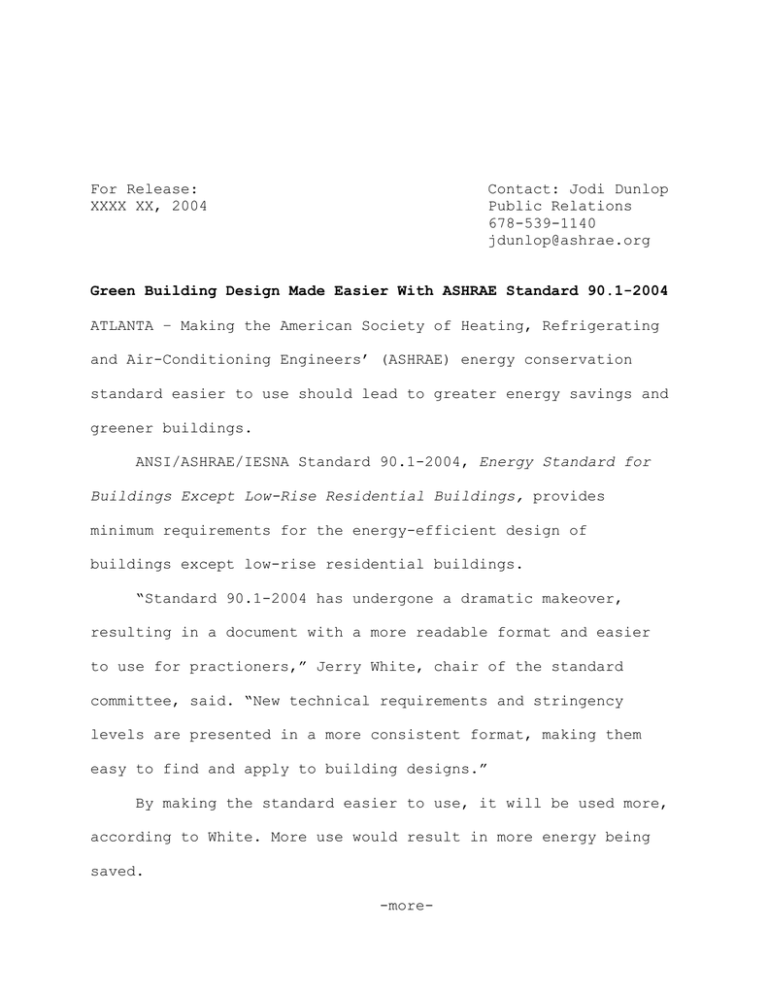
For Release: XXXX XX, 2004 Contact: Jodi Dunlop Public Relations 678-539-1140 jdunlop@ashrae.org Green Building Design Made Easier With ASHRAE Standard 90.1-2004 ATLANTA – Making the American Society of Heating, Refrigerating and Air-Conditioning Engineers’ (ASHRAE) energy conservation standard easier to use should lead to greater energy savings and greener buildings. ANSI/ASHRAE/IESNA Standard 90.1-2004, Energy Standard for Buildings Except Low-Rise Residential Buildings, provides minimum requirements for the energy-efficient design of buildings except low-rise residential buildings. “Standard 90.1-2004 has undergone a dramatic makeover, resulting in a document with a more readable format and easier to use for practioners,” Jerry White, chair of the standard committee, said. “New technical requirements and stringency levels are presented in a more consistent format, making them easy to find and apply to building designs.” By making the standard easier to use, it will be used more, according to White. More use would result in more energy being saved. -more- ASHRAE Standard 90.1 . . ./2 The standard contains a new informative appendix to rate the energy efficiency of building designs that exceed its minimum requirements. The guidance provided in this appendix should be beneficial to HVAC designers who are trying to achieve the required points for either a Silver or Gold Leadership in Energy and Environment Design (LEED) certification of a facility, according to White. For designers who are participating in a LEED-certification design, the standard’s energy cost budget method was produced in collaboration with representatives of the U.S. Green Building Council. Changes to major sections of the standard include: Lighting Revised interior lighting power limits are generally more restrictive than the 2001 standard values. The values are an average of 25 percent more stringent and will require more careful lighting design in some applications. A new exterior lighting section includes specific lighting power limits for a variety of exterior applications. Mechanical The mechanical section has been reorganized to make it -more- ASHRAE Standard 90.1 . . . /3 easier to read. New climate zone data further simplifies many of the mechanical requirements from economizer requirements to duct insulation. In addition, energy efficiencies were increased for fans, single package vertical units and 3-phase air-cooled air conditioners. Climate Zones The number of primary climate zones for heating and cooling was reduced to eight from 28. Each county in the United States has been mapped to a particular climate zone. As a result, building envelope and mechanical criteria will apply on a countywide basis, and often to many adjacent counties. Reducing the number of primary climate zones resulted in a reduction of the number of tables of building envelope criteria to eight. This reduction results in simplification while minimizing the changes in the building envelope criteria. Energy Cost Budget (ECB) Method A new table reformats requirements to show the symmetry between simulations of a design building model to a budget building model in the ECB method. This makes it easier to determine the efficiency of the design. -more- ASHRAE Standard 90.1 . . ./4 The standard is recommended for inclusion in the 2006 International Energy Conservation Code and the National Fire Protection Association 5000 Building Construction and Safety Code. The cost of ANSI/ASHRAE/IESNA Standard 90.1-2004, Energy Standard for Buildings Except Low-Rise Residential Buildings, is $110 ($88, ASHRAE members). To order, contact ASHRAE Customer Service at 1-800-527-4723 (United States and Canada) or 404-636-8400 (worldwide), fax 404321-5478, by mail at 1791 Tullie Circle NE, Atlanta, GA 30329, or visit the ASHRAE.org Bookstore at www.ashrae.org. ASHRAE, founded in 1894, is an international organization of 55,000 persons. Its sole objective is to advance, through research, standards writing, publishing and continuing education, the arts and sciences of heating, ventilation, air conditioning and refrigeration to serve the evolving needs of the public. ###


